In Washington, it is possible to spot 8 different species of Hawks. These are:
- Red-Tailed Hawk
- Northern Harrier
- Northern Goshawk
- Ferruginous Hawk
- Swainson’s Hawk
- Sharp-shinned Hawk
- Cooper’s Hawk
- Rough-legged Hawk
Want to learn more? This book on the Birds of Prey of North America is a fantastic read!
Washington State, being the most northwestern part of the United States, is in an ideal position to benefit from the Canadian breeding grounds across the northern border.
In fact, the state’s climate is so similar that birds of prey make little distinction between the climates past a certain latitude.
This list covers the hawk of Washington State, a nomadic creature by nature, and explains the best means of spotting them.
Want to attract birds of prey to your yard? Take a look at our article!
What Hawks can be seen in Washington?
1. Red-Tailed Hawk
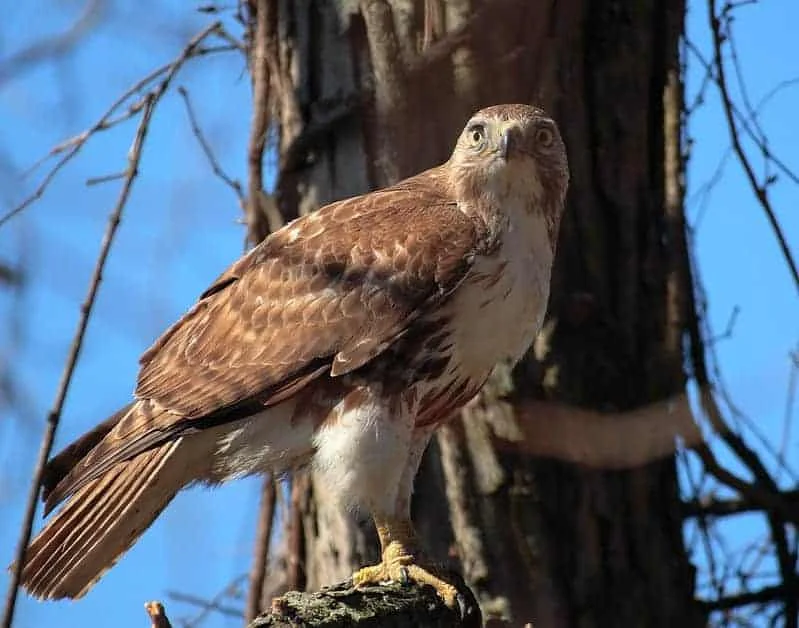
The red-tailed hawk has an abundant presence in all fifty US states, and those close to Canada like Washington are even more likely to encounter this large raptor.
They are known to rest near open roads and in abandoned buildings, often venturing closer to civilization than other birds on this list.
They are highly adaptable in terms of habitat, hunting everywhere from deserts to open prairies to forest glades.
Their names indicate their most distinct feature, as the varying speckles of brown, gray, and black in their wings, back, and head are interrupted at the tail by bright red feathers.
2. Northern Harrier
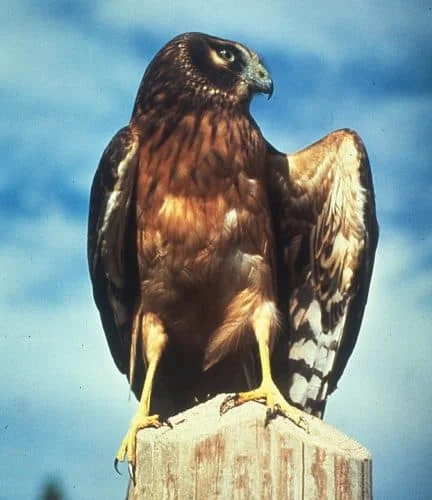
This hawk could easily be mistaken for an owl at a glance, with its bulky body, rounded head, and even the trademark faceplate (a ring of hardened feathers encircling the eyes and beak).
The name ‘harrier’, which may be familiar to fighter jet enthusiasts, refers to its hunting method. Like the jet that is named after it, the northern harrier glides above its target for extended periods before striking rather than swooping down from a perch like most raptors.
This makes them far more likely to be encountered in open countries like the northeastern part of Washington, usually in marshlands where there are as many aquatic animals as land animals from which to choose.
3. Ferruginous Hawk
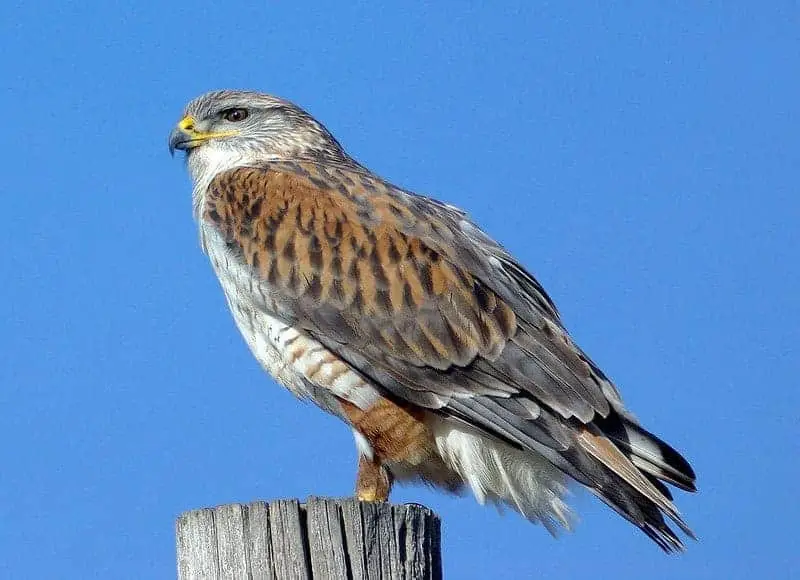
The figurative meaning of the word ‘ferruginous’ means ‘rust-colored’, which notes this raptor’s reddish-brown markings across its entire body.
These are consistent regardless of whether it’s light (white) or dark moth (brown or gray), and they are concentrated in the shoulders, neck, chest, and wingtips.
It is one of the larger of the North American hawks, and surprisingly, one of the more comfortable with human contact.
This is a boon for birdwatchers, but dangerous for those too bold in approaching an unseen nest. It uses all its species’ tools on the hunt, from ‘harrying’ its prey from the sky, swooping down from a perch, or running along the ground near the homes of digging rodents to snatch them as they peek above ground.
Like the other hawks who breed in Washington state, the ferruginous hawk is concentrated in the southeast corner near Idaho.
4. Swainson’s Hawk
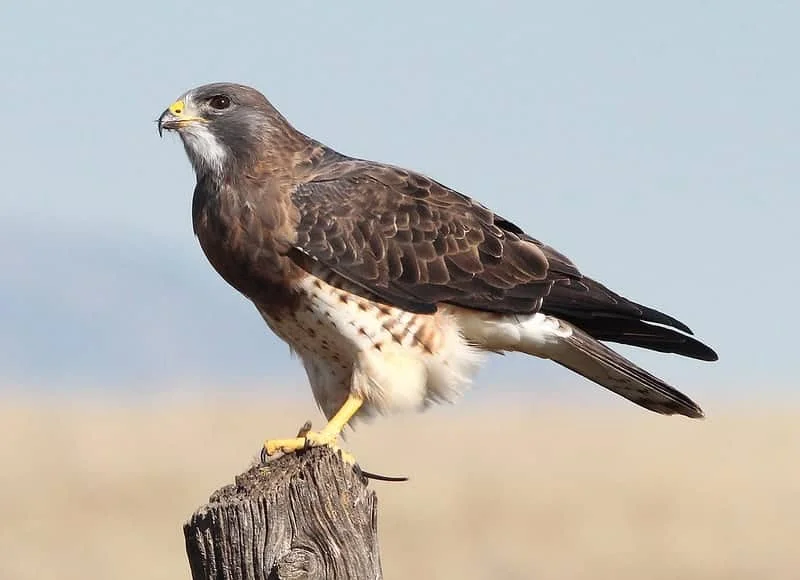
The buteo swainsoni has a strong breeding presence in southeast Washington, with a dense concentration near the border to Oregon.
Unlike most of the hawks featured here, the Swainson’s can be considered a U.S. bird rather than a Canadian bird that spreads to America.
Their colors vary widely: a light morph may have a white belly and wing underside with a dark brown or gray back and wing top; a dark morph can be mostly brown with a grey head, or vice versa.
Each is recognizable by the dark ‘bib’ of feathers draped across the neck.
Rather than seeking the highlands with crisp winds and tall pines, this raptor is more comfortable hunting in the plains, striking out from the edges of deciduous forests at uninterrupted flatlands, remaining airborne almost as long as the harrier.
5. Sharp-shinned Hawk
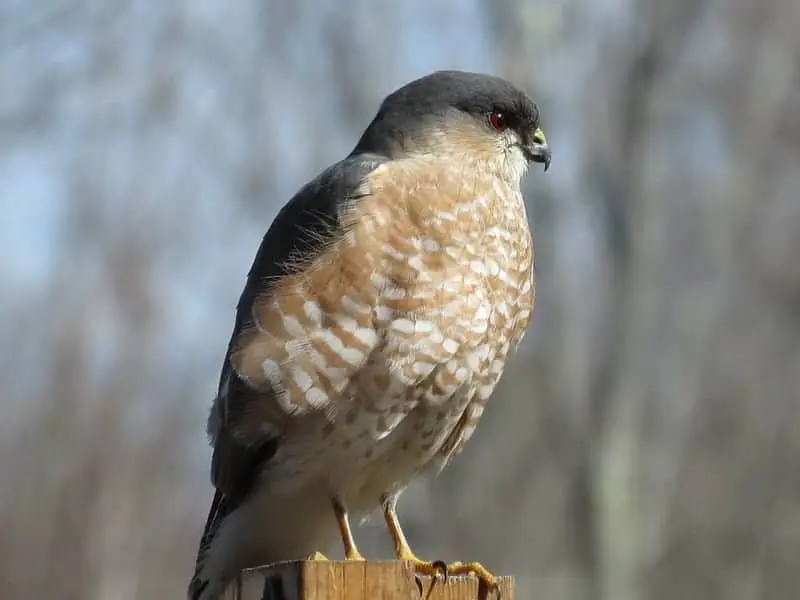
The Cooper’s smaller cousin, affectionately called a “sharpie”, is one of the most adaptable of the hawks in the state, with some staying through the winter and others traveling as far south as Central America.
Sharpies can be classified as forest birds, preferring to stay in remote wooded areas like groves and riversides rather than venturing into civilization.
Their migrations are quite spectacular if you’re fortunate enough to have access to the coast, where they gather in flocks of hundreds to go on winter vacation.
Looking past their nearly identical coloring as the Cooper’s hawk and the size difference, sharpies can be differentiated by their rounder heads, larger eyes (relatively), and longer tails.
Like the Cooper’s, they maintain a breeding population on the northeastern side of the state, which spreads even farther into other regions than their kin.
6. Cooper’s Hawk
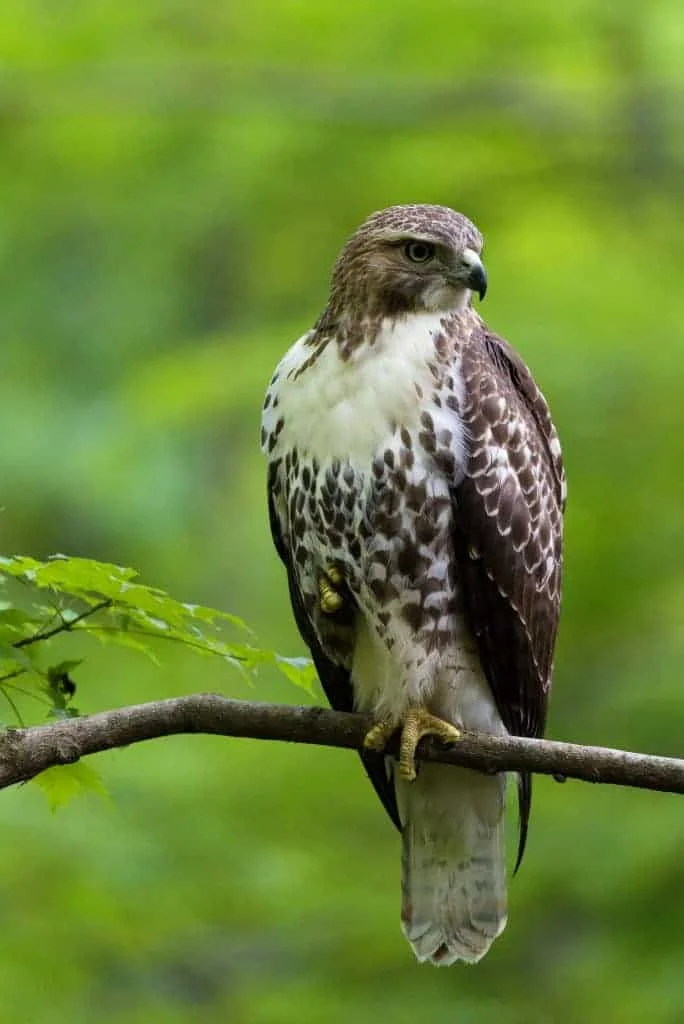
This hawk is often mistaken for the sharp-shinned hawk due to their similar appearance, though it’s a level bigger on the sparrow-to-vulture scale.
They do have similar coats, usually, a blue-gray ‘jacket’ (wings and crown) with a white belly striped sporadically by a reddish-brown color.
Less common morphs replace the blue-gray with a speckled pattern of light and dark gray. Coppers’ are famous for their aerial maneuverability, as they are equally capable of picking up prey from the ground as they are at snatching songbirds from mid-air.
Along with the year-round migratory community in Washington, Cooper’s Hawks have a robust breeding population that spills into its northeast corner from Canada and Idaho.
7. Northern Goshawk
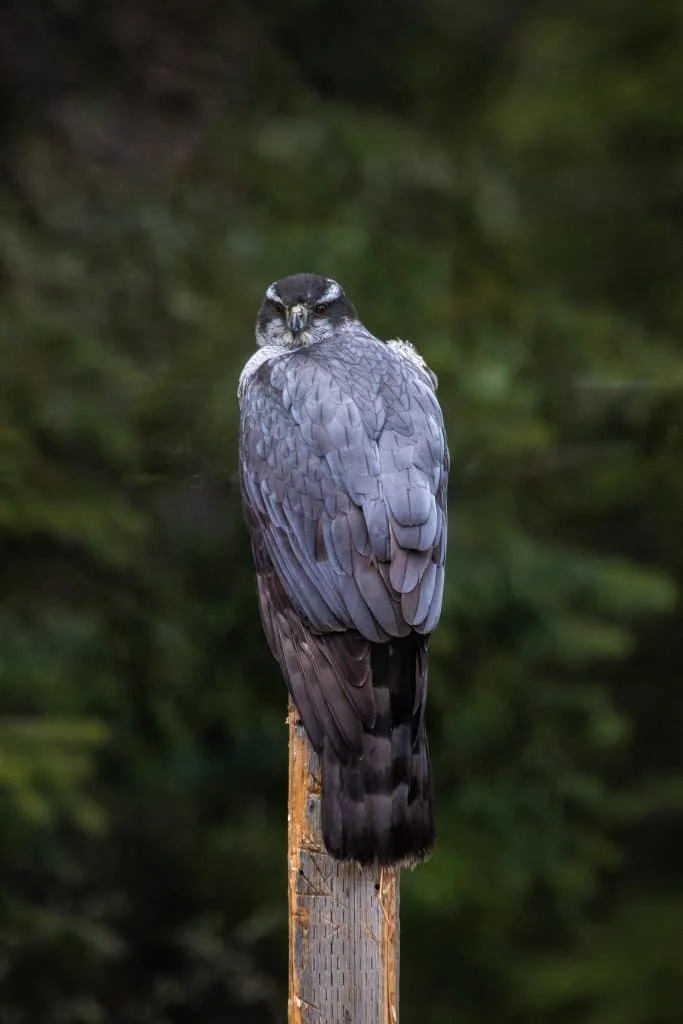
The goshawk spends most of its time in the high regions of Washington that most closely resemble its frigid comfort zone. In winter, the goshawk is just as likely to fly south as it is to simply relocate to a lower region in the state depending on the seasonal climate of any given year.
They are distinct among hawks in terms of appearance, particularly about its face where a black mask and white ‘eyebrows’ (a ridge of white feathers above the eyes) give it the appearance of a mischievous rogue.
Its body is usually a blue-gray or dark brown about the wings, crown, and back, with a contrasting white belly that completes the image of a sharply-dressed charlatan darting about the woods.
It is the largest of the North American accipiters, but it hunts in the same way, darting from high perches in the pines at the edge of forests to strike at watery lowlands.
8. Rough-legged Hawk
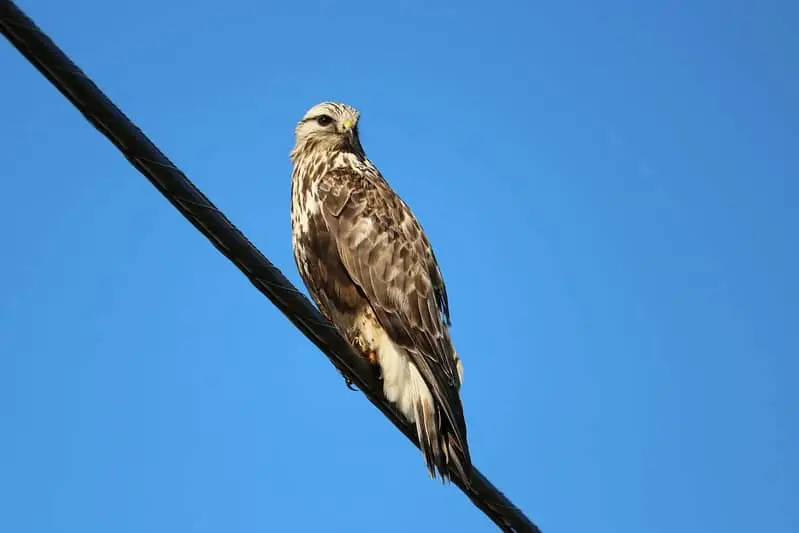
This arctic bird is more comfortable in the frozen north than most other birds of prey.
It can be assumed the feathers running down their legs that give them a ‘rough’ texture also protect them against the cold. This buteo is one of the larger hawks in the US, both in terms of bulk and wingspan.
Their color patterns vary as much as any hawk, from different shades of brown speckled with white all over, or completely dark brown, and less commonly, mostly white speckled with black or dark brown.
While this hunter does have the good sense to leave the arctic in the heart of winter, it will still seek out the coldest parts of Washington such as frozen tundras and highlands.
References
- https://www.audubon.org/field-guide/bird/northern-harrier
- https://www.audubon.org/field-guide/bird/swainsons-hawk
- https://www.audubon.org/field-guide/bird/ferruginous-hawk
- https://www.audubon.org/field-guide/bird/northern-goshawk
- https://www.audubon.org/field-guide/bird/sharp-shinned-hawk
- https://www.audubon.org/field-guide/bird/red-tailed-hawk

About Us
We are avid bird-watchers who recently retired, allowing us more time to travel the world. Fortunately, we have managed to visit numerous countries around Europe, Asia, and America. Watching and photographing birds has been a passion for many years and we are making the most of the extra time on our hands!
